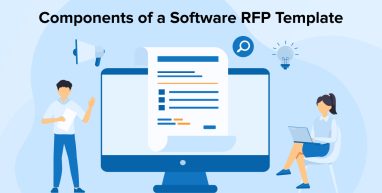
In the past years or some decades back, the bidding process was different than it is now. To make the process more solicit, RFP templates were introduced to this bidding process for the development of software projects. This solicit process ensures that the software development projects bids are reliable and you get the right to choose the reputable software development services for your functional requirements according to the business needs. The process of bidding was quite complicated and writing a software proposal is not an easy task. Therefore, to guide businesses, we have decided to create a guide that helps them to draft their own RFPs. So, let’s dive into the world of RFPs where we will see it from the scratch by understanding its need, components involved, benefits, and similar other factors.
1. What is RFP for Software Development?
To understand what software development RFP is, you must first know how businesses define it. RFP template is the first document that companies must produce before contacting a software development business. As the abbreviation of RFP is Request for Proposal which clearly means to propose a deal to the potential vendors.
Some of the vital information related to software projects like the precise specifications and the anticipated delivery date will also be included in the RFP. In the software development process, the IT vendors will base their bids on the basis of the software RFP you present to them. This proposal template will help them make further decisions. A client and a software development company base their subsequent conversations and negotiations on the RFP document.
1.1 Why Do You Need a Software Development RFP?
In order to find a reliable software development partner with the experience and knowledge. Someone who can help you finish the project effectively is the ultimate goal of any RFP. Three important things to think about when creating a call for proposals are as follows:
Request quotes from reputable vendors in order to find a potential software solution for a project. One must create RFPs that are Content: A clear, succinct RFP should include both general and specific information about your project. On the RFP, you should list all the features, ideal tech stack, integrations, and requirements.
RFPs are essential for the development of challenging software projects. You should create an RFP with your specific requirements once you’ve made a detailed plan for your software project, identified its goals, and established the purpose of your product.
1.2 Benefits of RFPs

If you’re still debating whether or not to use a Request For Proposal template, it’s critical to understand that doing so will enable you to make a more educated choice. Here are the most significant RFP-related benefits and described how to leverage them to speed up the partner selection process.
1. Need a Careful Evaluation
A distinct understanding of the expected results is necessary to develop an effective RFP. It’s crucial to go into detail about your target market, the industry you’ll be operating in, and its key competitors. You have the opportunity to delve into these specifics while creating a request to ensure that you have evaluated the project as a whole.
2. Make the Selection of Vendors Easier
To sieve out the best software companies, it will be simple to compare vendor proposals once you have an RFP that follows a consistent structure. Then you can make a list of the criteria that you’d like to see and compare it with other potential possibilities. For specific, if you have a specific industry that you are targeting then the filter should be in the same direction. You can easily make a move and select the proposal of a software development company whose RFP stood different. In addition, businesses can lack the necessary knowledge which is understood by their detailed RFP templates. The project goals can now be clearly understood and the changes can be made accordingly as per the RFPs.
3. Saves the Majority of the Time
RFP use is shrouded in widespread mistrust among firms. Even while creating a thorough RFP takes a lot of time and effort, the benefits are enormous. In order to build world-class software, you need to spend less time responding to follow-up inquiries about ambiguous specifications. This will be in place only if your RFP is comprehensive and clear.
Not to mention that the more information you publish about the project, the less likely it is to make large errors that would require a lot of work to fix. In addition, with an RFP in hand, a vendor has the chance to assess early on whether it is prepared to handle the requirements, saving you from having to filter through a large number of unqualified proposals.
2. Components of the RFP
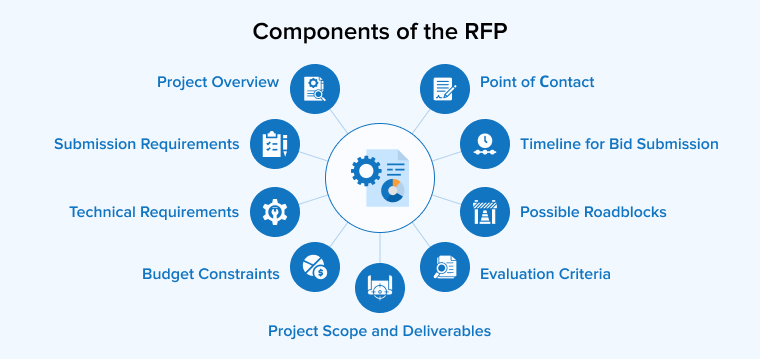
In order to simplify this process, here is a list of RFP software development components that will help businesses to create a sample RFP document for themselves. The actual project goals will be easily achieved with these tried and tested components of the RFP format.
2.1 Project Overview
This part doesn’t need much explanation because it is nothing but the summary of the software project along with the company name and its background information. This part contains all the summarized information about the prospect, about their business and most importantly what they’re looking to achieve with this software project.
2.2 Project Scope and Deliverables
Make a list of every feature that requires development. Be explicit in describing the front and back-end development requirements. Additionally, you describe the support you hope to offer in the form of useful documents at various processing stages. Additionally, you can specify a target deliverable schedule and a deadline for the project’s completion so that your software vendors can assess their chances of completing the project on time according to their technical expertise.
2.3 Timeline for Bid Submission
In this timeline section, all you need to do is to specify the timeline with due dates for different RFP software development phases. You can divide the phases in accordance to meeting deadlines like:
- Meetings with the vendors to clarify any issues.
- The due dates for responding to RFPs.
- Request For Proposal publication date.
- Vendors’ deadline for submitting and announcing their intention to bid.
- Closing interviews.
- Deadlines for software selection.
The software vendors should be given enough time to adhere to all of the Request For Proposal timeline. You increase your chances of receiving accurate quotes by giving enough time to the outsourcing companies. You should be aware that you can skip a few steps and cut the procedure in half if your project is not too difficult.
2.4 Submission Requirements
In this case, the RFP template outlines specifications for vendor proposals. Include, for instance, the maximum number of pages, formats like electronic or Word or PDF, and distribution mode that you desire for your documents email, hard copy, or online RFP software. The requirements can also be aligned with the only matching vendors whose requirements can be taken into consideration or used to build more documentation, such as case studies.
2.5 Evaluation Criteria
Evaluation is another important aspect that needs to be used in the following standards to judge bidders and proposals: This criterion is based on
- Past performance or previous experience.
- Examples or case studies of previous clients’ projects.
- Both practical knowledge and experience of the software development team.
- Anticipated costs for the software development services.
- Answers to the questions in the next part, as well as responsiveness.
2.6 Technical Requirements
Any technical details that are crucial to the project will go here in this section. Include details about topics like additional applications/platforms and your current IT infrastructure systems and devices will need to be integrated with the software. The program should improve user account accessibility.
2.7 Budget Constraints
It is not always possible to provide a pricing range or an elaborate budget for a project. Vendors can use this information to assess if the project can be completed within the estimated timeframe and cost. Some businesses may even end up assisting you in restructuring your project so that it fits under your spending limit. They can scale them down later, remove optional components, or change the work’s priorities.
2.8 Possible Roadblocks
Here, you should list any potential roadblocks that would hinder specific vendors from effectively completing the project, like a lack of resources or a unique website. This enables you to remove unacceptable bidders and will assist you in identifying which vendors possess the necessary knowledge and experience to address those difficulties.
2.9 Point of Сontact
There will be an online form for sending bids if you post your RFP on some professional sites, such as outsourcing portals, freelance markets, or your firm website. However, endors may have further inquiries to elucidate the project specifications while reviewing the requirements. Tell potential contractors how they can get in touch with you.
3. RFP Process
RFPs often lay out the specifications for a particular project, whether it be for a corporation, a nonprofit, a public sector organization, a software development firm. To determine which bidder is most qualified for an opportunity, RFPs have grown to be a significant component of the solicitation process. RFPs are also a fantastic approach to conveying the project’s requirements and being transparent about the project’s objectives and vendor choices.
Typically, the following steps are included in the RFP process:
- Asking potential software vendors and participants for bids via the RFP procedure.
- To all interested vendors, the RFP is distributed.
- The final selection of candidates is done for a more personal review.
- Master service agreements, non-disclosures, work statements, and other legal documents are signed in a formal manner.
- There is a waiting period before receiving and answering vendor-submitted clarifications. Usually, a single document contains all of the clarifications for every vendor.
- The periodic sessions for the software project’s initial planning must also be considered
4. Conclusion
In any software project, the process of selecting a software vendor in the place of RFPs plays a vital role. With this blog, we hope to bring ways to use Request for Proposal documents as a template to filter out the right software developers. You will get an idea about the company background, project management goals, project scope, technology arena they have expertise in, and several other details through this one document called request for proposal (RFP). The process will be expedited, your business will be able to save a lot of time and help you select the right company for your business.


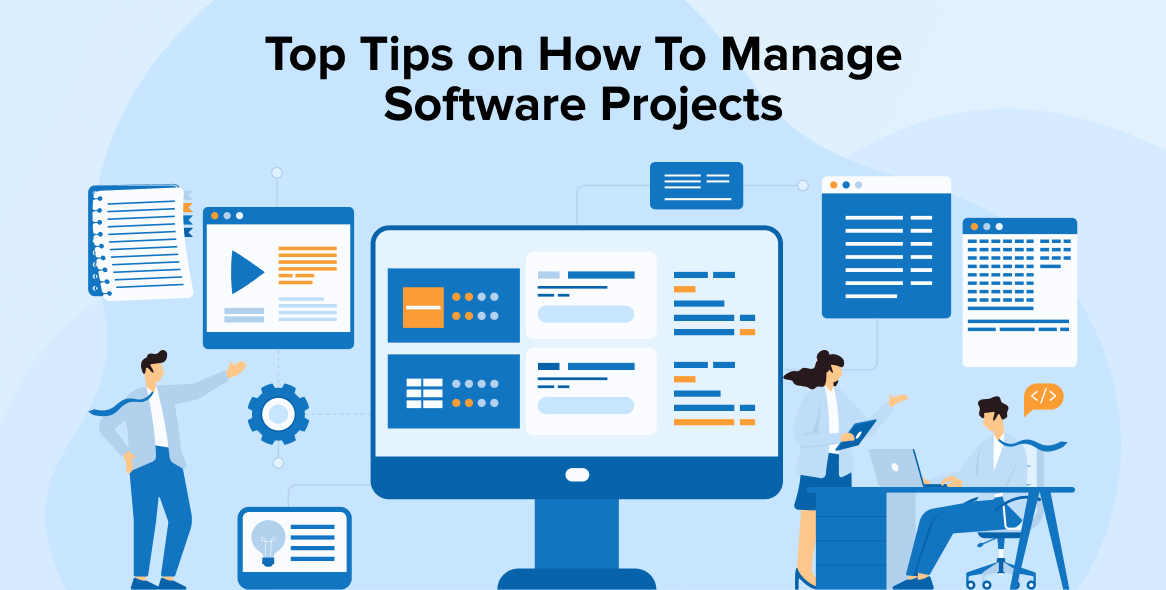
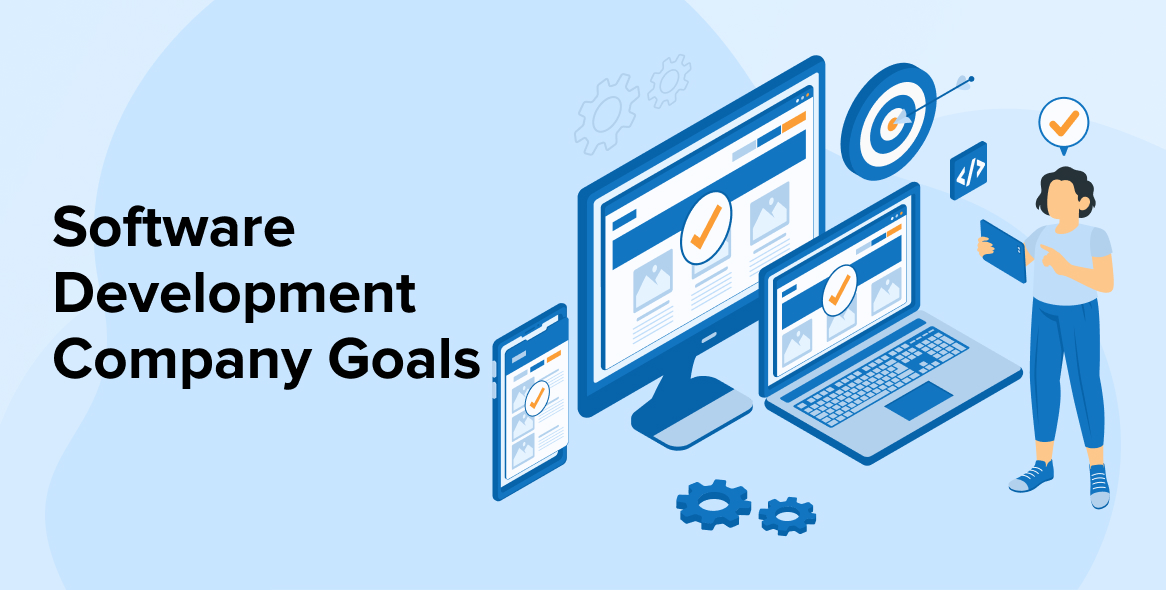
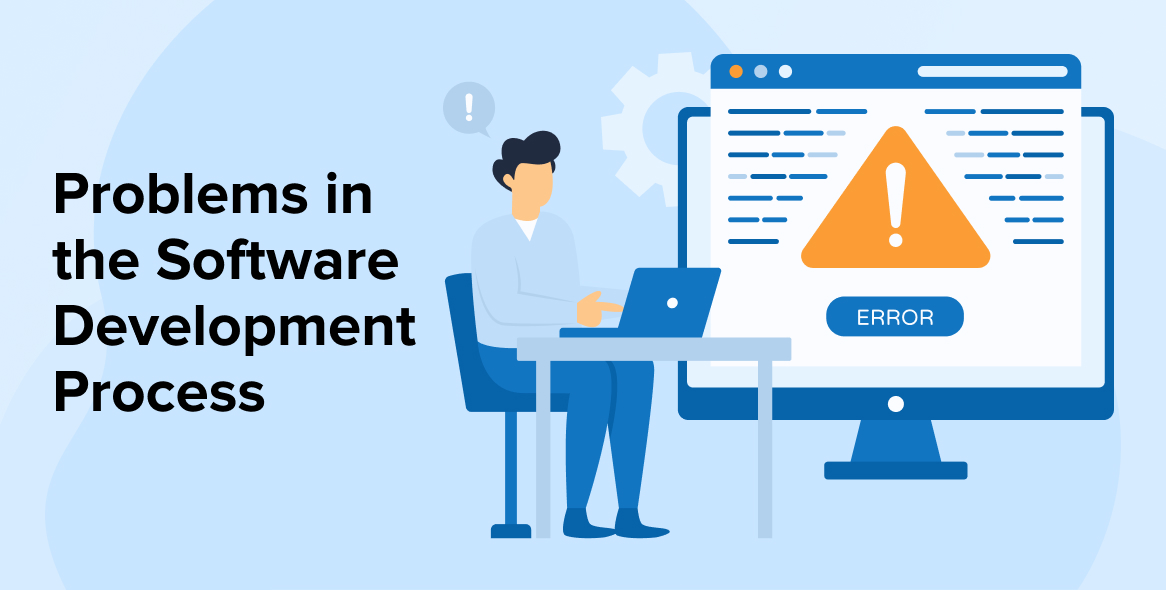

Comments
Leave a message...